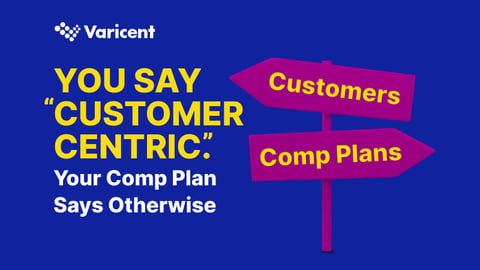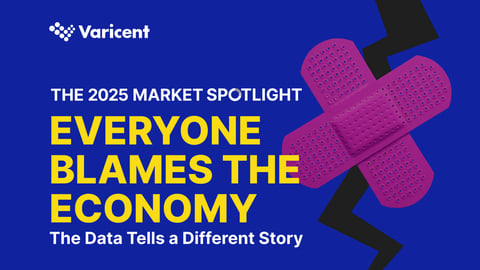This is part of a series of interviews with B2B revenue leaders. This interview is with Ron Tite, Founder of Church+State.
Note: at the time of the interview, Ron was working as the CEO of The Tite Group.

Before we get into all the content stuff, could you please tell me what Monkey Toast is?
Sure, Dan. Monkey Toast is a comedy show in Toronto. We interview guests who have unique backgrounds and jobs.
We have six of the most talented improvisers in the country that inspire the conversation. You get to learn about the guest with conversation that is inspired by absolutely brilliant comedy.
You laugh a little, you learn a little... it's a lovely night out.
Tell us about The Tite Group and your role in the company.
The Tite Group is a content agency that deals with brands as well as content companies. We consult with brands like Microsoft, Johnson & Johnson, and CBC.
We understand that the content world is being completely disrupted, and so we take what we know about brands and apply it to the media space.
We go between the content world and the brand world to do our best to bridge the gap. We take what we know about content and apply it to brand, and vice-versa.
We're constantly redefining the relationship that people and brands have with content.
- how they consume it
- how it's created
- how it's distributed
I spend a lot of my time on the strategic direction of the organization, the strategic direction of our clients, and on top of that I do about 70 speaking sessions a year at different conferences and events.
Today we're talking about the creation of original content, but before we get there, how do you start the brainstorming process for those content ideas?
That's the biggest problem right there… too many people think of it as a brainstorm. While there certainly is an element of it, it's more of a creative process. There aren't enough people that focus on the strategic approach.
Here's the process that we go through with many of our clients:
1. Establish a brand belief
We know that brands need to stand for something greater, and their content needs to reflect that. So what is it? What do they believe?
That's the first step we get our customers to do, finish the statement:
We believe that… {fill in the blank}
Example: we just did some work with the Canadian Wilderness Federation, and we came up with a brand belief "We believe that… animals are citizens too." Once you have that brand belief, it becomes so much easier to come up with content ideas.
We can crank out plenty of ideas right here, right?
- Long-form census for animals
- Identify the animal refugee crisis
- Charter rights and freedoms for animals
2. Create an external facing content platform
Okay, so if we believe that animals are Canadian citizens, we’re not going to say that flat out, so what’s the external positioning? What’s the look and feel of it (colors, text, etc)?
Example: we just did some work with Johnson Insurance, and so the creative platform for all their content sits under something called The Lighthouse — it’s their content platform. It has a specific art direction to it and it's something that can be spun into other spaces.
3. The Buyer's Journey
Once you’ve got your brand belief and content platform, then you get into the buyer's journey (or consumer journey or a transaction journey… whatever you want to call it.)
Here you can start thinking about how a person goes from thinking “I need a new coat,” to actually purchasing a coat.
Where are all the places they go? What's all the stuff they look at on the way to making that decision? What type of content do you need at each stage of that process to ensure that they are getting the content they need?
4. Distribution (everybody forgets this step)
If you don't follow your strategic path to content generation, you won't consciously think of distribution.
Who is it that you want to see your content? How are you getting it in front of them? Is it through content partnerships? Paid media?
Distribution is just as important as creation.
So, Marketing will be the ones leading the charge on that, but is there any other teams they should be collaborating with along the process?
I don't know that there's an easy answer for that; it depends on company size.
There are a million different ways to do it and if you don’t have the skill internally, you better get people in who can help you. (Is that a brilliant content agency like The Tite Group? Maybe.)
The second thing you need is an editor-in-chief. They have to be someone who has the credibility of a journalist, combined with the experience and the knowledge of that specific category.
Then you’ve got to have some sort of content calendar manager. If you know you’re going to write five blog posts, three illustrations, and two videos, you need someone to manage those. Who’s writing the blog posts? Who’s shooting the videos? What’s the work back schedule?
The ideal situation is to find topics that aren't being talked about currently so that you’re the first, but how do you know if no one else is writing/talking about it because it's just not relevant?
The first thing you need to do is you need build consumption into your process.
Let's say your brand belief is that people should live on the edge. Well, somebody better be consuming all the content that reinforces that brand belief. That means being dialed into the Red Bull media channel, the X Games, and the latest extreme sports YouTube clips.
When you commit to that, you're going to have a better sense of what's out there in the category. If you don't see your topic bubble up to the surface, then it’s probably irrelevant.
What about topics that are strongly related to your brand promise that have already been written about? What’s the best way to deal with that?
There are different ways to deal with this:
1. Improve on what’s out there
"Different is better than better."
— Sally Hogshead
If you’ve found a topic that you want to write about but find that a credible source has already covered it, try to improve on it.
You can do this a couple of ways:
- Do some research to back up some of the claims in the original article as a value-add.
- Do you agree with every single portion of the article? Probably not. State why you disagree with certain points (respectfully) and find resources or stats to back it up.
In any case, it’s smart to reference the original article and even mention the writer/brand in the social promotion of your piece to spark conversation and get people talking about it.
2. Change the delivery
Instead of writing a better article, why not deliver that content in a different way? If it exists as a blog post, why don't you do it as a podcast, or animation, or video?
The problem is everybody is trying to outdo one another in the same space. The number of standup comedians who have bits about airlines? It's almost a rite of passage, but can you think of any specific quintessential one? No, not really. Everyone's got one and nobody's standing out.
3. Alter your perspective
Something else to try is having a unique perspective on that subject area.
If you’re doing an article on the Top 10 Indian restaurants, what’s your perspective… from the chef, diner, critic? Find a perspective that hasn’t been covered that can add value to your audience.
How do you segment your content to deliver to your different audiences at different stages of the buyer's journey?
I want to start by taking a step back.
Before I ever suggest that my clients start customizing content for different stages of the funnel, I make sure they’re already in the habit of producing content on a regular basis. If not, you're trying to leapfrog the entire process to get to this end state that you read somewhere is the mecca for content marketing.
After you’re used to producing content regularly, it’s not hard to match content to stages in the funnel. Listening is the most important part. What are the questions prospects are asking at different stages? Once they have answers, where do they go? What’s the next step for them? What activities do we need them to do in order to move down the funnel?
The call-to-actions that you put at the end of each piece of content is important here… how do we take them to the next level? Then, once you've got that, then you're just duplicating your process.
You have a content calendar for people who are in a certain stage of the funnel, and a different content calendar for people who are in a different stage of the funnel, and so on and so forth. It gets really complicated.
Right, so you’re saying to get in the habit of writing content on a regular basis and then from there, you can start to target certain pieces toward certain segments?
Exactly. Too often I see marketers biting off more than they can chew.
Start by making your content amazing, then worry about slicing and dicing it for different audiences.
How do you go about validating new ideas? And how do you evaluate how those new ideas perform so you know whether or not to do it again?
A lot of marketers spend too much time on individual posts. They’ll look at how one specific post did on Tuesday at 4:00 PM. It’s like having a stock portfolio and looking at the individual stocks every single day; that's no way to do it.
If you track individual initiatives to try and get some learnings out of it, I think what ends up happening is you try to game the system. You’ll read a post that says, "Here are the Top 5 ways to make your blog post cut through the noise. Number one, use 'hula-hoop' in the headline." Next thing you know, you’re sprinting towards hula-hoop headlines and your content will pay the price.
Now I'm curious to know some of your favorite resources. The first one I'm looking for is someone that is a must-follow on Twitter.
Patton generates some interesting content at interesting times and doesn’t have the sales bias of wanting you to listen to a podcast or buy a product. He’s a comedian, so I guess his sales bias is he wants you to watch him on Netflix or something.
(By the way — my Twitter handle is @rontite)
What about a favorite blog?
I don't know that it qualifies as a blog, but the digitally shared content from Harvard Business Review is great.
In terms of your pure business blog, Seth Godin is the standard that everyone tries to live up to. His stuff is always fresh.
There's a pitch in there, but he just gets up every day and writes. I think that's incredibly inspiring for every single brand out there — he just gets up and writes.
Final resource I’m looking for is your favorite book.
I'll go with the book that I'm reading right now, Pre-Suasion by Robert Cialdini It's great.




